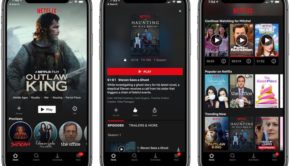6 Big Myths Of Connected TV, Debunked
When it comes to connected TV, there are plenty of myths and even some bald-faced lies. Discuss connected TV with others or read through relevant content and you are likely to see plenty of inaccurate information. The time has come to separate fiction from fact. Below, we take a look at the top myths of connected TV and debunk them with the truth.
Myth #1: Connected TV Reaches a Limited Audience
There is a common misconception that connected TV is limited to a small percentage of households. As reported by the Leichtman Research Group, 80% of houses in the United States have access to connected TV. eMarketer reports that the percentage of United States households with access to connected TV will jump all the way to 87% by 2025.
Myth #2: Connected TV Viewers are not Engaged
There is also a misconception that connected TV viewers are not actively engaged with the content being streamed. The truth is those who consume connected TV content are much more engaged than those who passively watch broadcast and cable TV. Connected TV viewers are locked in to their favorite shows and other streaming content as they proactively choose to watch it. These engaged viewers are that much more likely to pay attention to commercials weaved into connected TV content.
Myth #3: Running a Connected TV Campaign is Expensive
There is a common misconception that connected TV ad campaigns are egregiously expensive simply because the technology is relatively new. Compare the cost of connected TV ad campaigns to ad campaigns on regular TV and you will find connected TV is a fantastic deal.
Keep in mind, ads on traditional TV have historically cost around half a million dollars per month when aired on the top TV networks. In contrast, connected TV advertising campaigns often cost $10,000 per month or less. In other words, small to medium sized companies have the potential to obtain extensive exposure to their target demographic with affordable connected TV ads.
Myth #4: Connected TV is Only Watched by Millennials and Generation Z
The individuals consuming connected TV content are not strictly limited to the younger age cohorts. The fact that connected TV is viewed in more than three-quarters of the nation’s households makes it clear that viewers of all age cohorts consume this streaming video content. Though the initial forms of connected TV required some tech acumen, the technology has become democratized through Roku TV and other connected TV platforms, making it easy for baby boomers and older individuals to stream web-based video.
Business owners, managers and marketers should recognize the fact that connected TV is still in its infancy. Make the transition to connected TV advertising instead of being late to adopt it into your advertising mix and you will enjoy the benefits of establishing early and meaningful inroads to your target audience.
A recent eMarketer forecast indicates the United States has a total of 182.6 million connected TV users. The same eMarketer forecast predicts the number of connected TV users will soar to nearly 205 million by the end of this year.
Myth #5: Connected TV is the Same as OTT
Connected TV and OTT are very similar, but not identical. Though both connected TV and OTT are commonly referenced interchangeably when discussing new forms of streaming video and opportunities for advertising, there are important distinctions of note.
OTT, short for over-the-top, is a reference to the means used to deliver content that is streamed. OTT is best thought of as the manner in which video content and ads are transmitted to customers. OTT is a reference to consuming streaming content without the use of a traditional cable TV box or satellite TV. As an example, someone who streams Netflix through a smartphone or other mobile app is consuming OTT content.
Alternatively, connected TV is a reference to a device one uses to stream video content, i.e. a TV that’s connected to the internet. As an example, connected TVs such as Samsung Smart TVs and Roku TVs are becoming that much more popular with each passing day as they make it easy to stream video content through Hulu, Netflix and other streaming services.
Most OTT content is consumed through connected TV these days, which is why the terms are often used interchangeably.
Myth #6: Connected TV Ads are Inherently Confusing
Though running ads on connected TV is a bit more complicated than running ads on linear TV, there is no reason to be intimidated. Become familiar with the industry’s lingo, place an ad on connected TV and you will quickly master the short learning curve. When in doubt, ask for assistance from industry veterans and you will find navigating the landscape of connected TV advertising is surprisingly easy.
Cover Image by Freepik







![Understanding RFID Skimming: It’s Time Block Your Personal Data Breach [Infographic]](https://technofaq.org/wp-content/uploads/2018/02/Understanding-RFID-Skimming-Its-Time-Block-your-personal-data-breach-150x150.jpg)


![Firefighting Drones [Infographic]](https://technofaq.org/wp-content/uploads/2017/12/firefighting-drones-infographic-150x150.jpg)





